How to upholster a door with leatherette with your own hands
Leatherette upholstery is a currently rarely used method of decorating a door leaf. But in some cases it justifies itself. Thanks to this method of finishing, several effects can be achieved at once: insulation, sound insulation and ennoblement of the old front door.
Depending on what material is used for upholstery, work can be done both with the removal of the door from the hinges and laying it out on a horizontal surface, or without removing it from the box.
Door upholstery methods
There are three main ways to upholstery doors with leatherette:
- Upholstery of interior doors using screw buttons.
- Classic upholstery with decorative nails.
- Tiled upholstery.
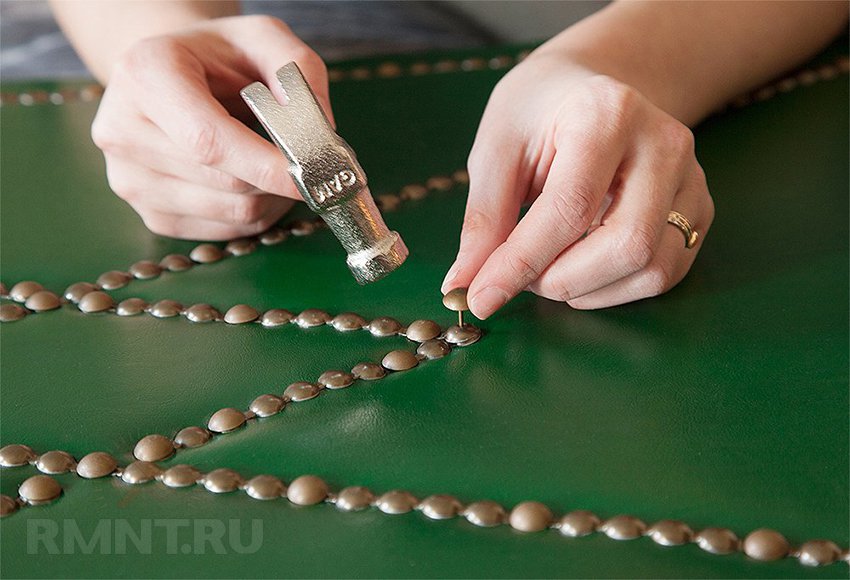
Each of these methods has its own advantages and the choice depends solely on the skills and tastes of the owner of the door. In addition, some of these methods cannot be applied to a panel door made of wooden blocks with fiberboard or plywood sheets glued to them (hollow sheets).
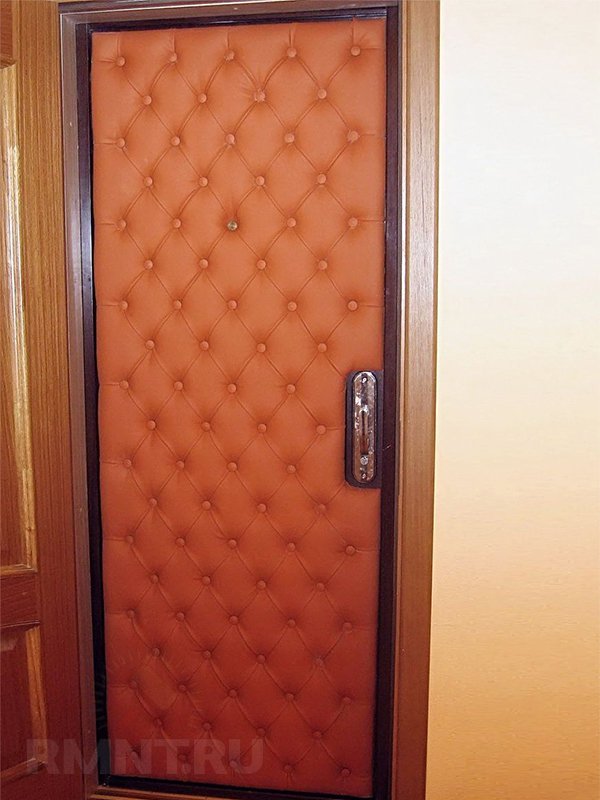
Leatherette upholstery materials
Leatherette is an artificial material, which is a fabric base with a polymer coating applied to it that imitates the skin. Modern leatherette has good performance (elasticity, sufficient strength, moisture resistance). Leatherette is easy to care for, wash with detergents. The main advantage is the breathability of leatherette.
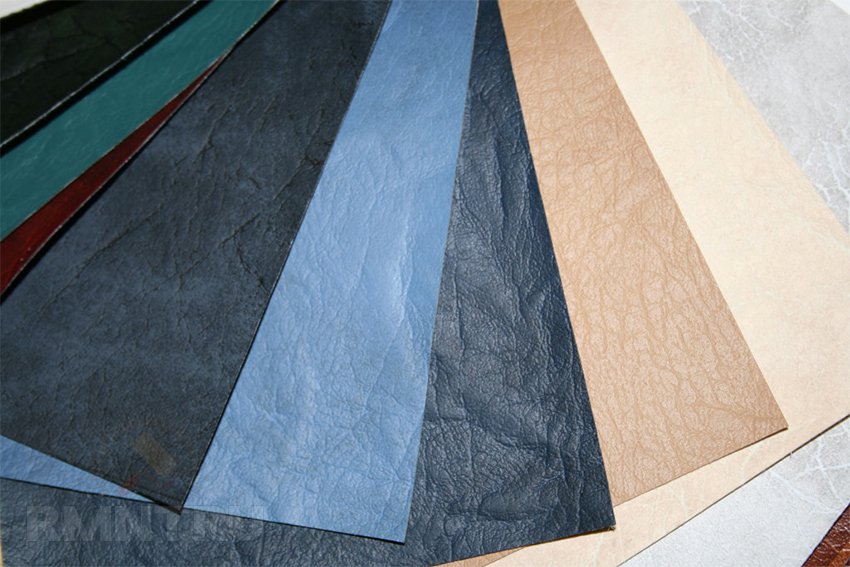
As a filler (insulation and noise insulator), you can choose batting, foam rubber, polystyrene, technical wool or synthetic winterizer.
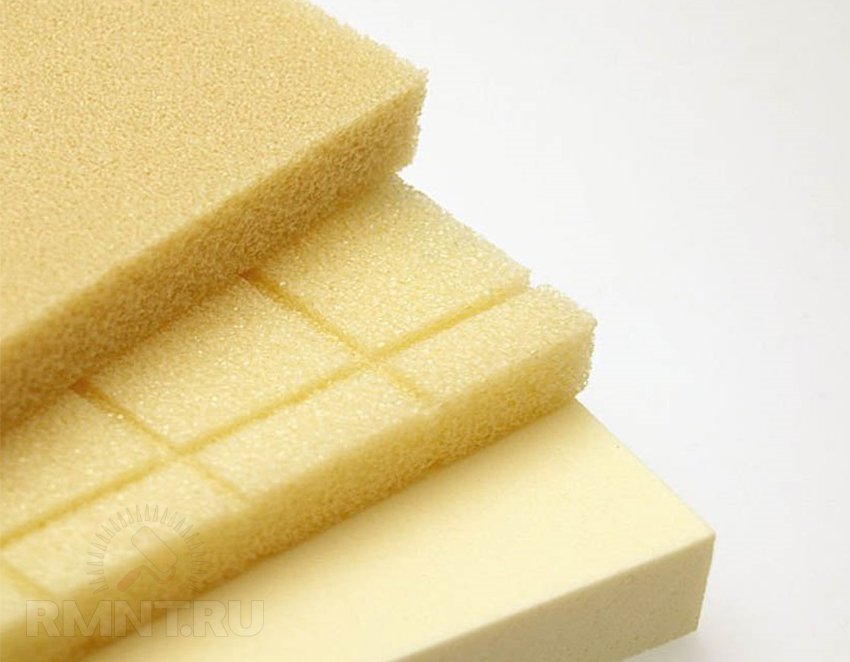
As fasteners are used:
- nails;
- decorative metal string;
- Staples;
- screw buttons;
- glue.
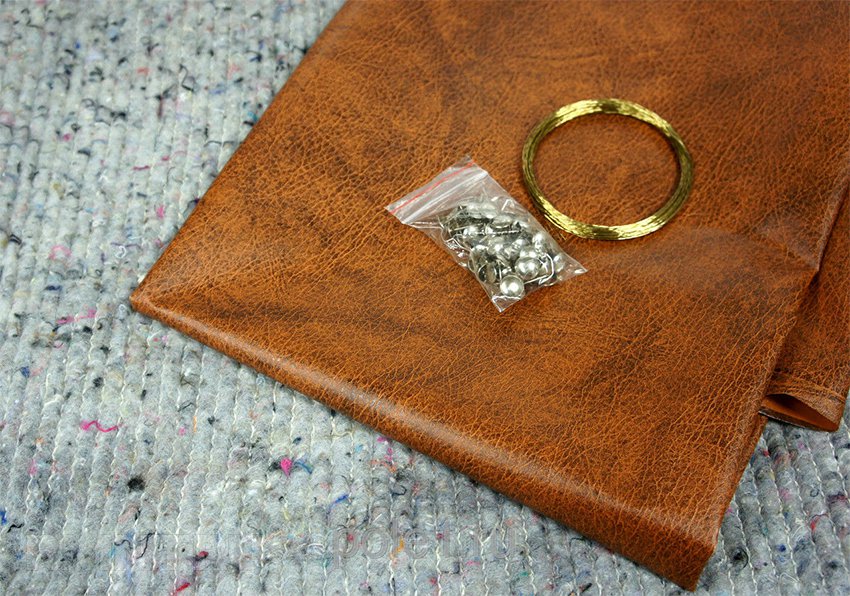
Preparing the door for upholstery
If you plan to upholster an old door with leatherette, it must be repaired before starting work. First, they remove all the fittings: overhead locks, a doorknob, a peephole, an apartment number, a mailbox.
After that, the door is removed from the hinges and laid out on a flat horizontal surface. If there are deep defects on the door leaf, they are leveled with epoxy putty or filled with polystyrene foam patches. Through holes in the doors (from the door peephole or lock mechanism), if they are not planned to be installed in place after upholstery, are closed with plywood, or clogged with a wooden chop or filled with mounting foam. Check if the door hinges need to be replaced.
Upholstery with screw buttons
Most suitable for paneled interior doors. It is impossible to drive a nail or stapler into a thin fiberboard, they will not be fixed. Glue is used to attach leatherette. It can be a "liquid nails" mounting adhesive or a similar construction adhesive designed for bonding building materials.
First, the door is marked out by applying a coordinate grid on it, which will allow you to evenly glue the base of the screw buttons to the canvas.

The bases of the buttons are glued to the marked places and left until the glue dries completely (usually 24 hours). After that, a heater with pre-cut holes is laid out on the door leaf, which must correspond to the locations of the buttons. The insulation can be fixed on the canvas with the help of construction stapler staples.
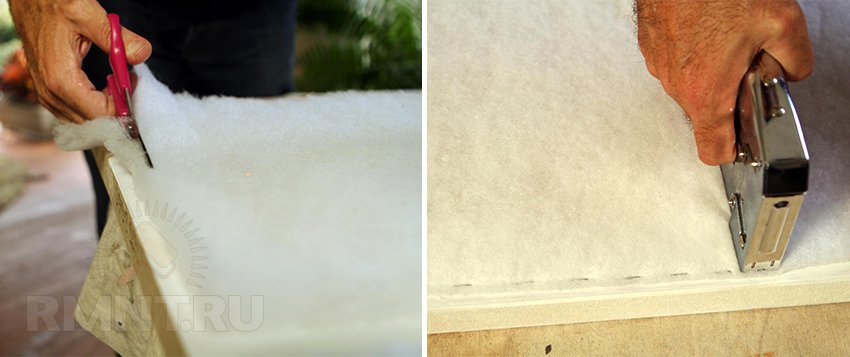
After that, the fabric of dermatin is laid out. In places of contact with the pins of the screw buttons, it is cut or pierced with a sharp knife and the pins of the buttons are brought out.
Excess leatherette and insulation are carefully trimmed around the perimeter of the door leaf with a sectional knife or scissors. Fix with staples of a construction stapler. Foam rubber can be fixed with glue.
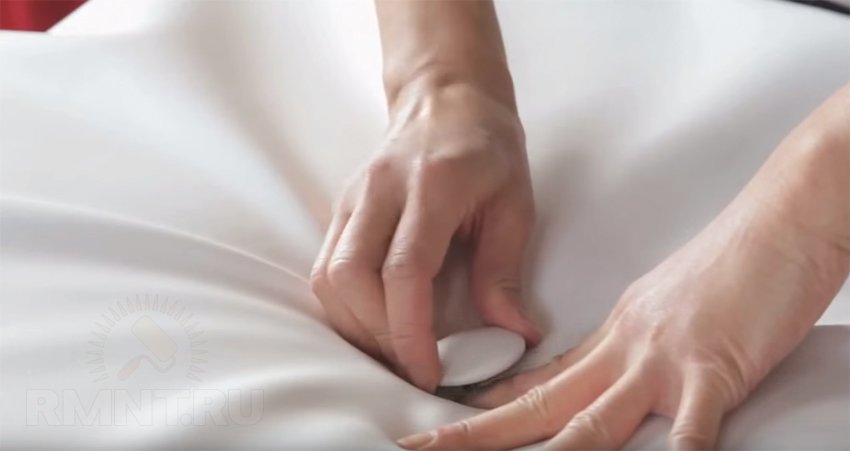
Decorative button heads are screwed onto the protruding threaded pins. Along the perimeter of the door, PVC profiles are glued or fixed with nails or self-tapping screws. Work completed.
"Classic" door upholstery
They can only be upholstered with a wooden door made of solid wood. The method is convenient in that you can ennoble the door with leatherette without removing it from the hinges.
Handles are removed from the door, the door patch lock, the peephole is unscrewed. Insulation (batting, foam rubber) is fixed on the door leaf with the help of a stapler. Leatherette is placed on top of it, which is stretched and fixed with staples along the upper edge of the door.
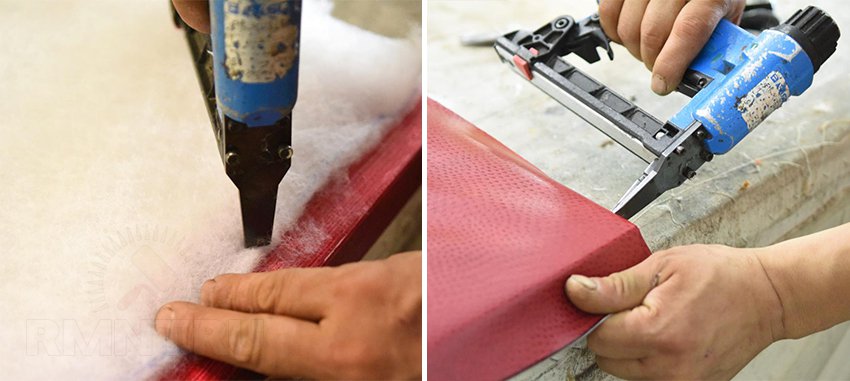
After that, the actual upholstery of the door is made using decorative nails with wide hats. If a string is used to achieve an additional decorative effect, the nail heads are not completely achieved. A string is wrapped around them (1 turn around the axis) and only after that the nail is completely achieved.
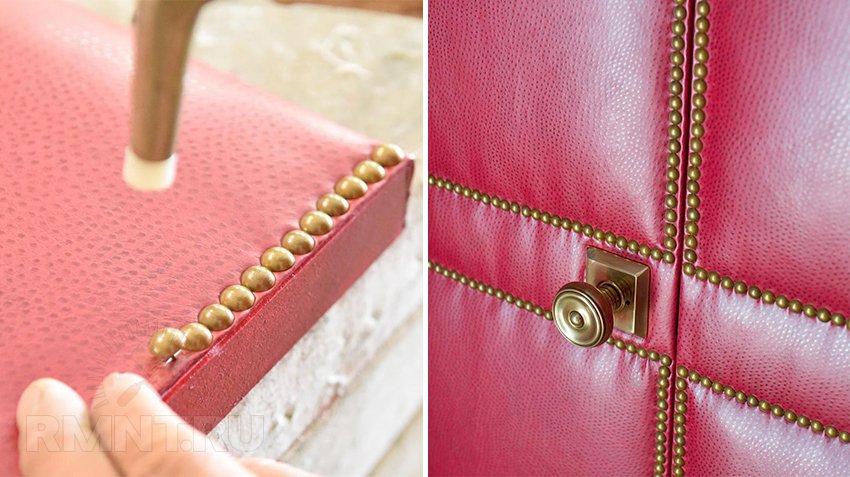
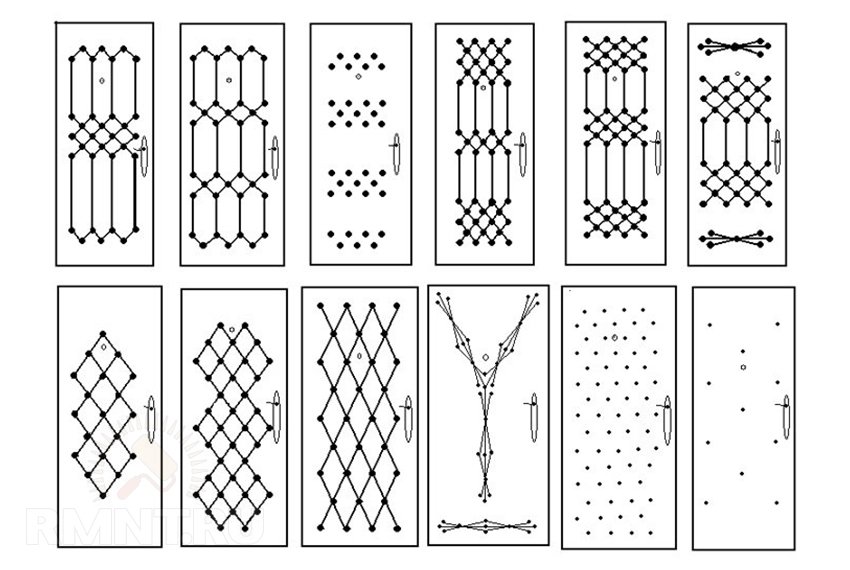 Upholstery pattern options
Upholstery pattern options
Along the perimeter of the door, excess insulation and leatherette are trimmed.
A border is formed on the door frame, which allows you to close the gaps and contributes to better sound insulation. To do this, a strip of leatherette 100 mm wide is fixed from one edge with staples on the door frame. A tourniquet, folded from a heater, is laid along the strip and fixed at several points with a stapler. After that, starting from the top, the unfixed edge of the leatherette is tucked in such a way that the insulation bundle is inside the leatherette. The free edge is folded over and fixed with staples or upholstery nails with a small head.
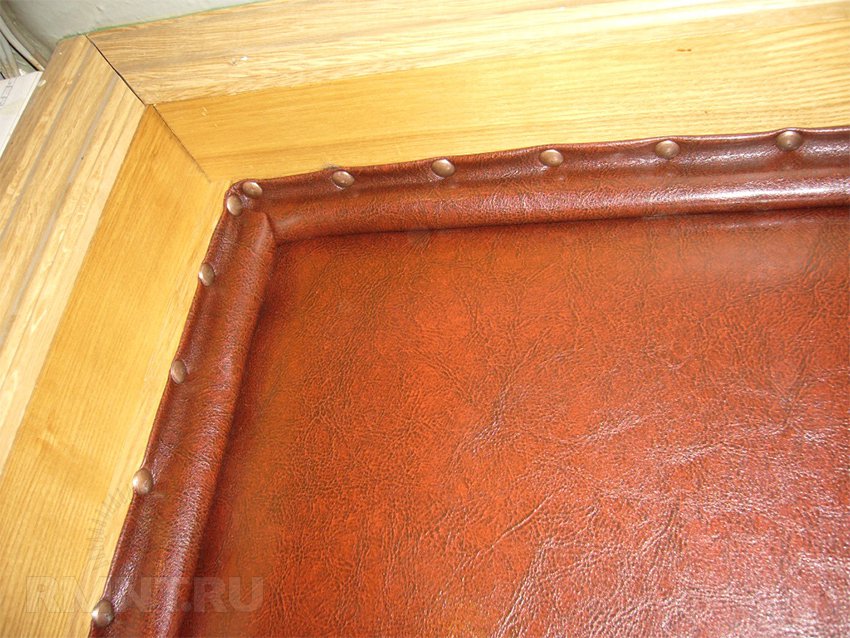
If the front door opens outward, then the edging is formed on the door itself. To do this, before laying and fixing the insulation, the leatherette strip, from which the edging will be formed, is fixed along the perimeter of the door leaf, and the edging roller is formed after the door upholstery.
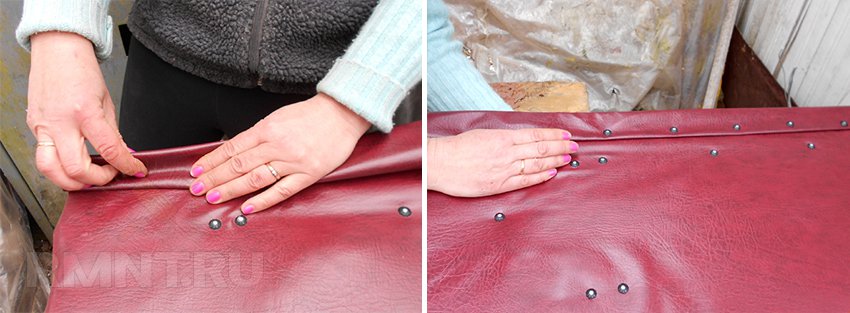
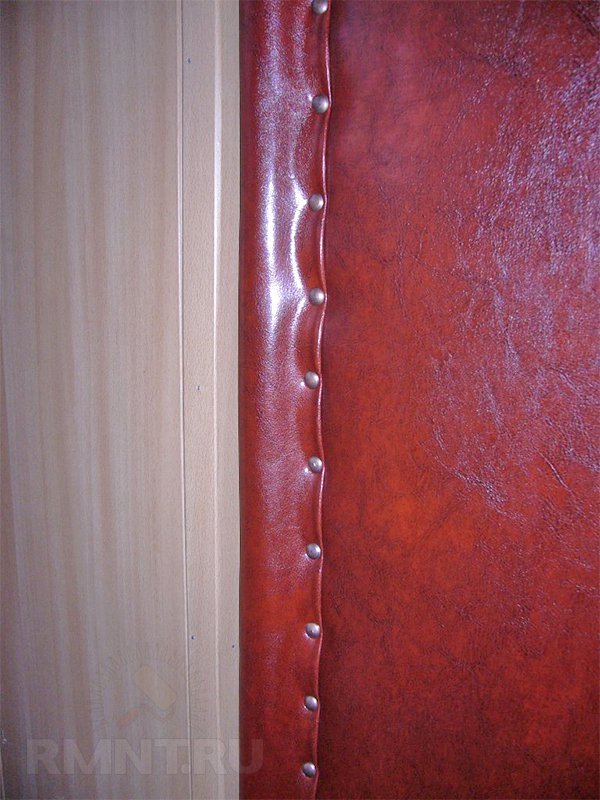
Tiled door upholstery
This is the most rarely used, but the most decorative way to upholster a door with leatherette. Preliminary preparation of the door is carried out in the same way as in the first two cases.
The door must be removed from the hinges and laid out on a horizontal surface. You can use the glue method using screw buttons if the door is paneled or metal, or upholstery nails with wide heads if the door is solid wood.
 Marking the door with a tiled method
Marking the door with a tiled method
The difference between this upholstery method is the use of diamonds of the same size pre-cut from leatherette instead of a single piece of fabric.
For rhombuses cut from leatherette, for ease of installation, one sharp corner is cut off. Upholstery starts from the bottom of the door. The first row of diamonds is fixed along the edge of the door with a stapler. Then sequentially, rhombus after rhombus, they are laid out on the surface of the insulation. The lower corner is fixed with a bracket. The edges of the rhombus are folded and the side corners are fixed with a screw button or nail, then the edges are again folded and the upper corner is fixed with a screw button (nail).

The formation of the edging for doors opening into the room is performed on the door frame, for those opening outward - on the door leaf, as in the case of upholstery in the "classic" way.
Leatherette upholstery of entrance or interior doors is one of the design solutions for the interior of a residential or office space in retro style. It can be easily done with your own hands, especially if ready-made sets of upholstery material are used for upholstery (leatherette glued to a foam rubber base), which greatly facilitates the work process.
